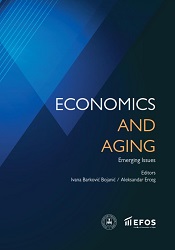
THE QUALITY OF LIFE AND AGING POPULATION: THEORETICAL REVIEW
According to world statistics coming from various international sources, we are witnessing a demographic shift that has resulted in the graying of the population at an unprecedented rate. In Europe alone, the percentage of people 65 and over is expected to reach over 30% of the population by the year 2050. When we additionally consider that life expectancy is increasing and that people’s perception of older age /retirement age is changing due to better living standards, then it is obvious that policymakers across the world need to invest serious effort to ensure the quality of life for the older population. The concept of quality of life is known as a notion in various social and human sciences. However, since the notion of quality itself is subjected to numerous definitions and often coupled with personal feelings and expectations, there are indications that concepts and concerns related to the quality of life in older ages may be different from the rest of the population. The purpose of this paper is to introduce the notion of quality of life and relate it to the aging population. By using the method of a narrative review of selected literature, the paper will try to capture multiple dimensions of the quality of life. As older people mostly assess their quality of life through health, social engagement, dependency, material circumstances, social comparison and the like, it is clear that the concept of quality of life is elusive and complicates an exact definition and measurement.
More...


